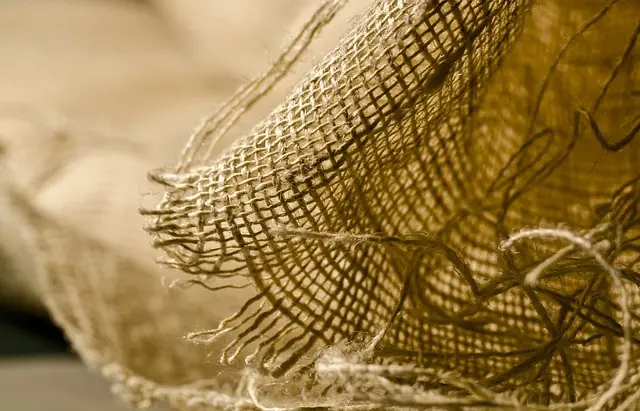Malaysian Kratom buds, derived from the Mitragyna speciosa tree, are known for their distinctive alkaloid profile and are influenced by Malaysia's unique ecological conditions. These buds have been traditionally used for their energizing, pain-relieving, and adaptogenic properties. A new trend involves combining Kratom with kava, a Pacific Island traditional beverage, to enhance its effects, which is increasingly popular among those seeking a balanced experience. The fusion of these two substances is gaining traction. Research continues to explore the therapeutic potential of Malaysian Kratom, emphasizing its significance as a herbal supplement and botanical remedy. Understanding the cultivation, processing, and diverse applications of Malaysian Kratom is crucial for anyone interested in its health benefits and the impact of its production on the environment and local communities. It's important to approach Kratom with caution due to its potency, varying legal status, and potential risks, including physical dependence and pharmaceutical interactions. A responsible use of Kratom requires a comprehensive understanding of its effects, proper strain and dosage selection, and adherence to ethical practices throughout the supply chain.
explore the intricate world of Malaysian Kratom Buds, a botanical wonder that has captivated interest across the globe. This article delves into their origins, traditional uses, and the meticulous process transforming these buds from trees to a revered traditional remedy. We will dissect the effects they impart, shedding light on the ethical dimensions surrounding their consumption. As a natural alternative to other wellness practices like making kava, Malaysian Kratom Buds offer a unique perspective in the realm of herbal medicine. Join us as we unveil the mysteries and rich history behind this botanical treasure.
- Unraveling the Mysteries of Malaysian Kratom Buds: An Overview of Their Origin and Uses
- The Process of Making Malaysian Kratom Buds: From Tree to Traditional Remedy
- Understanding the Effects and Ethical Considerations Surrounding Malaysian Kratom Buds Consumption
Unraveling the Mysteries of Malaysian Kratom Buds: An Overview of Their Origin and Uses

Malaysian Kratom buds, derived from the Mitragyna speciosa tree, have long been a subject of intrigue for botanical enthusiasts and researchers alike. These buds, native to the Southeast Asian nation of Malaysia, are renowned for their distinct alkaloid profiles, which differentiate them from those found in other regions. The climate and soil composition of Malaysia’s diverse landscapes play a pivotal role in shaping the potency and characteristics of these kratom buds. Harvesting these buds involves careful consideration of the plant’s maturity and environmental factors to ensure the preservation of their beneficial properties, which have been traditionally used by locals for energy enhancement, pain relief, and as an adaptogen.
The use of Malaysian Kratom buds extends beyond traditional practices; modern interest has sparked innovation in their application. Today, enthusiasts and practitioners explore various methods to enhance the efficacy of kratom, including making kava blends that integrate the best aspects of both substances for a synergistic effect. This blend, known colloquially as ‘kratom kava,’ is becoming increasingly popular among those seeking a balanced experience. The exploration of these blends and their potential benefits is an ongoing area of interest, with studies and experiments continually unveiling new insights into the therapeutic uses of Malaysian Kratom buds. As such, understanding their origin and diverse applications remains crucial for anyone interested in the world of herbal supplements and botanical remedies.
The Process of Making Malaysian Kratom Buds: From Tree to Traditional Remedy

The journey from the majestic trees of Malaysia to the traditional remedy known as Malaysian Kratom Buds is a meticulous process deeply rooted in cultural practices. Harvesting begins with skilled workers carefully selecting matured kratom trees, typically found thriving in the nutrient-rich soils and humid climate of Southeast Asia. The leaves, rich in mitragynine and other alkaloids, are handpicked at their peak potency to ensure the highest quality product. After collection, the leaves undergo a drying process where they are exposed to sunlight or dried with gentle heat, preserving the active compounds while preventing spoilage. This delicate process of dehydration is crucial in maintaining the integrity and efficacy of the kratom buds.
Once dried, the kratom buds are carefully sorted by size and quality. The next step involves grinding the buds into a fine powder, a process that releases the potent active ingredients for consumption. Traditional remedies often involve brewing these powders into teas or capsulizing them for convenient use. The final product, Malaysian Kratom Buds, is then packaged and prepared to be used as a natural wellness aid, with its effects on energy levels, mood elevation, and pain relief being highly sought after by those who partake in this traditional remedy. This entire process from tree to traditional remedy embodies the intricate care and cultural significance of Malaysian Kratom Buds.
Understanding the Effects and Ethical Considerations Surrounding Malaysian Kratom Buds Consumption

The consumption of Malaysian Kratom buds has garnered significant attention, particularly in regions where traditional botanical remedies are sought for their therapeutic properties. Kratom, derived from the leaves of the Mitragyna speciosa tree native to Southeast Asia, is renowned for its psychoactive effects, which can range from mild stimulation to sedative-like qualities, depending on the dosage and strain. The alkaloids found within the buds, primarily mitraphylline and 7-hydroxymitragynine, are credited with these varying impacts. Users often employ Kratom for its analgesic, anxiolytic, and mood-enhancing attributes. However, it is imperative to approach such substances with caution due to their potency and the nuanced legal status they hold in different jurisdictions. Ethical considerations are paramount when considering the sourcing, production, and consumption of Malaysian Kratom buds. Responsible harvesting practices, sustainable cultivation, and regulatory compliance are essential to ensure that the demand for this botanical does not lead to environmental degradation or contribute to the exploitation of local populations in source countries. Additionally, users should be informed about the potential risks, including physical dependence and adverse interactions with prescription medications. Making Kratom safely requires a deep understanding of its effects, a careful selection of strains and dosages, and a commitment to ethical practices throughout the supply chain.
Malaysian Kratom Buds, indigenous to the lush landscapes of Southeast Asia, have long captivated both local communities and a growing international interest due to their diverse applications. This article has journeyed through the intricate details of their origin, the meticulous process behind their preparation, and the nuanced effects they elicit. The traditional practices involved in the making of these buds are a testament to the cultural heritage and natural bounty of Malaysia. As interest in plant-based remedies continues to rise, it is imperative to approach the consumption of Kratom Buds with discernment and awareness of their implications, ensuring sustainable sourcing and responsible use. The insights provided underscore the importance of preserving these botanical treasures while also highlighting the need for further research into their therapeutic potential. With a deeper understanding of their cultural significance and effects, enthusiasts and researchers alike can appreciate the rich history and impact of Malaysian Kratom Buds, contributing to their sustainable use and respectful integration into modern wellness practices.






